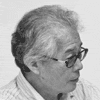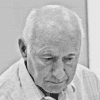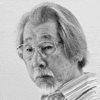Jurors' Comments on the Preliminary Side Assesment

Jun Fujita
Glass Artist Chairperson Japan Glass Artcrafts Association (Japan)
On behalf of the glass artists’ organizations in Japan and as one of the glass artists of Japan, I would like to express my sincere respect and heartfelt appreciation to the Executive Committee for exhibiting excellent glass works at “The International Exhibition of Glass Kanazawa 2010.”
Many people have pointed out the difficulty in assessing submitted works only by looking at their slide images. This time we faced the same difficulty. I could not help feeling honor and responsibility for judging quite a few works created by glass artists whom I have respected for ages. As for the works created by newcomers, I tried to understand their intention and quality by watching the images again and again. It took over an hour to see all the 470 slides. It was a painstaking task to screen the slides for seven to eight hours.
At the Preliminary Slide Assessment 72 works were selected out of 470 entries. It was very strict in selecting. I think that the selected works are more magnificent than any other glass competitions. Those with higher scores could be award winners, I am sure. It was also hard for all the jurors to decide which to select out of the works on the borderline. Finally we made a decision by discussing this and that and raising our hands. While judging, all the jurors valued “the power of the image.” As the matter of course, techniques and sizes are important, but more important is “appealing power.” I feel like listening to the artists’ voices out of their works at the exhibition held in August.

Yoriko Mizuta
Executive in Charge of Arts and Cultures Cultural Affairs and Sports Division Office of Education, Hokkaido (Japan)
“The International Exhibition of Glass Kanazawa” has provided a showcase of the world trends of glass art by exhibiting excellent works selected out of many entries since the first exhibition held in 1984. It has presented the diverse potentiality of glass as a material by exhibiting glass works with a variety of interpretation as “from our everyday items to artistic objects with new interpretation.” I am afraid that quite a few glass artists make it a rule not to apply for such an exhibition with a public call for entries due to their philosophy and style of their works. More importantly, however, this exhibition has provided both young and experienced glass artists with opportunities to evaluate their own works on the same stage and to earn clear criticism.
Viewers look forward to new expressions and novel approaches. I am pleased to see some highly-motivated and original works. Once glass artists find their original interpretation and express themselves through their glass works by utilizing glass as a versatile material, they have to continue to make progress in creating their works. I feel satisfied that some artists have refined their own style and created something new and others have succeeded in deepening their originality. On the other hand, some works have lost their novelty due to artists’ insufficient efforts while others are too similar to their previous works although they have reached a high degree of perfection.
It is my hope that this exhibition will grow and continue to open its gate to even more glass artists throughout the world and that more absolutely-excellent works created with painstaking efforts will be applied and competed.

Ryoichi Komatsu
Directer Kanazawa Utatsuyama Craft Workshop Deputy Chairperson Design Center Ishikawa (Japan)
I am pleased that this year marks the 11th anniversary of “The International Exhibition of Glass Kanazawa”. It has drawn public attention as an exhibition with a public call for entries. The trend of glass art in the world represents that more and more young glass artists have worked on glass art and the quality of their works has been enhanced.
This time we received 470 entries from 39 nations and regions for the exhibition while 456 entries from 35 nations and regions for the previous exhibition. This increase has shown more interests in the exhibition and competition.
At the Preliminary Assessment all the jurors came across the images of various excellent works. We spent a lot of time concentrating our mind on the images as a matter of course. Still, we cannot deny the fact that we have limitations in selecting works by only looking at their images.
During the assessment, we enthusiastically discussed materials, techniques, creativity of glass material and new trends. Finally we selected 74 works from 21 countries including 36 works from Japan.
The first International Exhibition of Glass Kanazawa started in 1984 as an only exhibition with a public call for entries. Since then, the exhibition has been appreciated as a showcase of world’s glass art for 26 years.
The exhibition has played a significant role in nurturing young glass artists in Kanazawa and its surrounding areas and in stimulating their artistic activities.
I hope that more promising glass artists will come out of this exhibition.
Jurors' Comments on the Final Assesment

Atsushi Takeda
Visiting Professor Tama Art University Art Critic (Japan)
At the Preliminary Slide Assessment 72 works were selected out of 470 entries, to be more precise 14% pass rate. It was very strict in selecting, but we couldn’t get to know whether or not the works selected based only on the images and data would be good enough until we saw the real works. As a juror of the Preliminary Assessment Panel, I have been concerned about this particular point each time. When I saw the real works for the first time at the Final Assessment, I felt relieved. Each of the works displayed there has a strong presence. The artists have expressed their unique perspective by making the best of glass as a material.
Needless to say, jurors differ in their esthetic sense and individual judgment. It is important that each juror respects other jurors’ points of view and repeats active discussion each time. We discussed and reviewed our perspective of the works and finally we decided all the award winning pieces. Next day at the round-table discussion, each juror had opportunities to make some comments on the works they appreciate. This round-table discussion is part of the program each time. It is rewarding for the jurors because they explain reasons for their selection and thus they take responsibility for their judgment.
To tell you the truth, selecting the award winning pieces was not easy. I often realized some works I had overlooked because as time passed my first impression became less impressive. In the end, not only excellent inspiration and techniques but also originality in expression was highly appreciated. The Grand Prize recipient is a student and an obscure new talent. His work is unique and novel in every aspect. The unique works submitted from the US and Estonia represent their cultural background. Some of them are awarded, so that the result of the competition has become varicolored.

Jiri Harcuba
Glass Artist (Czech Republic)
Art reflects life! “The International Exhibition of Glass Kanazawa 2010” is a witness of the feeling and thinking in our time. It also shows two major concepts of contemporary creativity: Organic principle and constructive principle, that is to say, our consciousness and perception. The brain has two parts performing sensitiveness on one side and speculative reflections on the other side.
The exhibition also demonstrates the outspoken individualities. It is not a competition of nations but of the individuals in the united world. What we can follow and appreciate are the schools educating a growing number of glass artists and also the growing number of women who have been educated and have worked with that attractive material glass.
Comments on the Grand Prize: The abstract shape of an organic form reminds some rather basic cells, some forms of the beginning of life. The material Glass in the interpretation of TAKASHI ISHIZEKI expresses the fragility in the most convincing way. Life is similar to Glass in fragility. The tenderness and richness of the details, the structure of the Glass fiber, the irregularity, the sense of something impermanent, incomplete and unfinished leads us to esthetic statements and philosophical conclusions. This work is far beyond everything we have seen in any other Glass-exhibitions. “The International Exhibition of Glass Kanazawa” has reached, with that Glass sculpture, the highest point in its history. It has entered the realm of the top manifestations in visual arts today. This sculpture is an appeal to think about the essential question of our existence in the time of merciless human activities which might lead us to an inevitable fate, the end of life on our planet earth at an accelerating speed. This sculpture is a warming memento and a wonderful esthetic experience at the same time.
Silver Prize - MARE SAARE: It is tenderness and intimacy of the soul and spirit of a sensitive woman. The title “SYNONYMS OF WAVE” is a Haiku poem in Glass. It is a small piece. We would like to hold it in our hands - to treasure it and to protect it. It is humble and it has a skin and all the attributes we admire in WABI-SABI.
“Old Women” by INGURRA AUDERE: I give my personal prize to that piece, which is to me a message from the ancient past. It reminds the prehistoric “Venus”. It is small but monumental. It is a precious “archeological” piece. The gold and patina give that timeless form and a magnificent appearance.

Jorgen Schou-Christensen
Glass Critic Chairperson and Curator Anneberg Glass Collection Retired Curator Museum of Art and Craft (Denmark)
Modern glass is an important art medium with thousands of active glass-artists spread over a great part of the world covering a rich variation of expressions and techniques.
The diversity in this modern world of the glass-art has grown over half a century. Back in the 1980’ies, when Design Center Ishikawa started the glorious series of exhibitions of modern glass-craft and glass-art, it was still a possibility to get an overview over the total spectrum of the international glass-art in order to clarify new trends.
Today a similar analysis will be difficult to complete even in the case of a very comprehensive exhibition and competition.
In this context, “The International Exhibition of Glass Kanazawa” seems to be rather unique and still be able to be in direct contact with all the most important centers of Glass-art around the world. This event is familiar to nearly every glass-artist in the world, of which many will consider to join the competition and to overcome all the problems related to participation far away from the homeland of the artist.
The organizers, the Design Center Ishikawa and the Executive Committee of “The International Exhibition of Glass Kanazawa”, have managed brilliantly to undertake the exhibition and the competition – a very great commission, indeed. “The International Exhibition of Glass Kanazawa” was from the beginning a national Japanese glass exhibition with an international admixture of more and more importance over the years.
Probably it seems easier for a Japanese glass-artist to apply and join the competition. All applicants and their works will of course enjoy the same status in the jury, but Japan has grown to be a very strong nation as regards the glass-art and for me it was absolutely fair, that the number of Japanese glass-artists in the final assessment was equal to the number of artists from all other nations together. It was whole-heartedly my first and remaining impression that the average artistic quality and originality among the Japanese glass-artists included in the exhibition were a step higher than those among the accepted international glass-artists.
In the division of the prizes Japanese glass was a little less dominating. As a result of the discussions, analyses and valuations during the Final Assessment the prize-giving reflected an absolute equality between the foreign and the Japanese artist who presented the very best works in the exhibition.

William Douglas Carlson
Glass Artist Endowed Professor of the Arts University of Miami (USA)
“The International Exhibition of Glass Kanazawa 2010” was my first opportunity to participate in the Final Assessment of this prestigious Glass Exhibition. I was impressed with the experience for several reasons. First is the ambitious level of professionalism with the organization of the event. The Design Center Ishikawa does a masterful job of soliciting the best of International Glass Art being made in 2010. This is a heroic task with the numerous languages, shipping, handling, installation and documentation. All of these challenges were conscientiously and thoroughly orchestrated allowing the jurors’ efforts to focus on the evaluation of the Art .The Preliminary Assessment of submitted Art is a crucial component with this event. That editing of participants allows the Final Jury to work effectively and responsibility in their selection of award recipients.
We the jurors discussed and reviewed our perspective of the work. Comments were candid, honest and as objective as possible in the subjective evaluating of artistic excellence. This was a rewarding process and we were quite similar in the assessment identifying the most noteworthy entries.
The metaphor used with my evaluation process is that of glass as a visual language. With so many drastically different ways of expressing the unique perspective each artist offers with a material as ephemeral and heroic as Glass. The jury searched for those pieces that offered new information and the unexpected in the redefinition of Glass of this moment in time. The award recipients possess this quality of discovery of some universal characteristic or spirit that captured our collective art appetite and deserved the recognition of Kanazawa 2010.
My Juror’s Award went to an entry that has strong traditional strength in the hot glass process. I felt that this piece transcended that familiar process and offered an interpretive quality with visual textures that referenced fabric wrapping these simple forms.
In closing, I would like to stress the unique opportunity for Glass that this exhibition represents. In reviewing the applicants it seemed that some regions with strong glass activity are under represented. Certainly the recognition for Glass Art has a strong foundation. It is my hope that this exhibition will grow and continue to gain support from even more Glass Artists in the future.

Naoto Yokoyama
Glass Artist (Japan)
My first impression on looking at the selected works displayed in the assessment venue was that this competition has accepted well worth seeing works. Some works, however, have no innovation. They are less impressing than before although each of them was created with its artist’s original techniques. I felt something lacking because “The International Exhibition of Glass Kanazawa” should be a place where each glass artist takes a new challenge. One must be touched when he or she feels novel expressions of the works even though they are created with familiar techniques. I hope that more glass artists can express their esthetic sensitivity, emotions, and joys without depending too much on the material and techniques. This is what the current of contemporary glass art has lacked.
From such perspective, the silver prize winner, Sahoko Tawara’s “Dream of Line” expresses her profound sensitivity. Many fine lines are floating in a lump of glass, which reminds me of etching techniques. It is interesting and charming. The transparent light yellow glass makes these delicate lines more attractive. It is a glass work all over. This small work, a harmony between expressions and techniques, represents one of the best examples of creativity.
I selected Camille Jacobs’s work as a Naoto Yokoyama Prize winning piece. This simple bowl can be interpreted as a root of contemporary glass art. I like its placid expression made up of the color composition which goes with the form. The artist’s intention, a tribute to a chromatics researcher Itten, is well-expressed.
I have recognized the significance of “The International Exhibition of Glass Kanazawa” once again because it has provided a showcase for variety of glass works throughout the world.
国際ガラス展・金沢開催委員会事務局
〒920-8203 金沢市鞍月2丁目20番地 (財)石川県デザインセンター内
TEL (076) 267-0365 / FAX (076) 267-5242 http://www.design-ishikawa.jp
Secretariat Office of the Executive Committee The International Exhibition of Glass Kanazawa
c/o Design Center Ishikawa 2-20 Kuratsuki, Kanazawa, Ishikawa 920-8203 Japan
Tel: +81-76-267-0365 Fax: +81-76-267-5242
